The 50 States Project is a series of candid conversations with interior designers across the country about how they’ve built their businesses. This week, Chicago-based designer Caroline Turner tells us about her early career experiences under design icons like Kelly Wearstler and Nate Berkus, how she has fine-tuned her team’s collaborative approach, and why her firm works from home on Mondays.
You were working for Nate Berkus, and then launched your own firm. How did you decide you were ready to fly solo?
I always knew that I wanted to do something on my own. The creative aspect of this job was always the part I felt like I would be best at, so I worked for some incredible people in the industry and learned more than I could have ever dreamed. And when I parted ways with Nate Berkus, I sort of had a come-to-Jesus meeting with myself: The options were to work for someone else or try to take a leap and do it myself.
At the time, I was working for a distant family member who had asked me to do a city place for them, and then I worked on a Michigan project for them. She knew I was looking for a new opportunity and said to me one day, “You can do this, and you should try.” Literally, none of this would have happened if she hadn’t said that in the car. The next day, I filed for my LLC. They were not paying me for that job, so they very graciously offered to pay for the photographer to shoot the space. It ended up on Domino, which is really what launched my career.
Did you feel the impact of that press right away?
It had a large impact on my confidence. Press is great, but it can be a bit ego-driven. I’m hesitant to say this, but as of now, I don’t feel like press is really the thing that’s bringing in clients. If anything, I think it just gave me the confidence and gumption, frankly, to go after it and do bigger projects. In some ways, Domino legitimized me so that the client who was considering [working with me] could take that leap of faith.
Where did the next clients come from? How did you start to build that pipeline of incoming work?
I did a Pilates studio in Chicago for that same family member right when I started my own firm. One of her clients loved the space and evangelized, [which led to] one of her close friends hiring me to do their Tudor home in Highland Park. We did a near top-to-bottom renovation on it, and that ended up on House Beautiful.
After that, I did feel a shift for sure—and there were certainly a lot of small projects in between. My first job I ever took that wasn’t someone related to me was a $5,000 budget. Not a $5,000 fee—a $5,000 budget. Which is impossible. But you know, I was so scrappy at the time and was just trying to make it work. I don’t know anyone in Chicago—it’s not like I’m from the suburbs and have a pipeline by any means—so there was a lot of building my way up. I think the Highland Park project is the one that I really dug my heels in as far as construction, and I really got to figure out how I wanted to work with a contractor. From there, big construction jobs started rolling in.
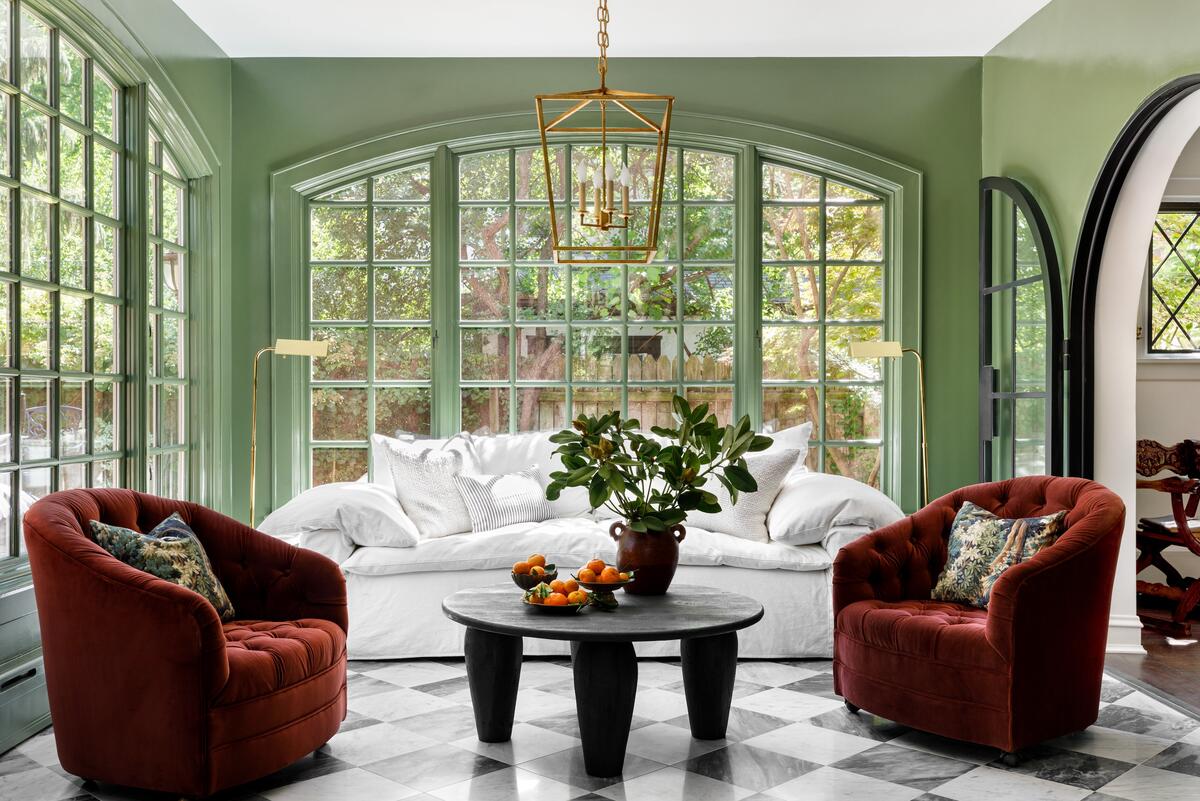
How do you make sure that the next project is a little bit bigger, that the budget is a little bit bigger? Where do you see your marketing efforts or your choices impacting what’s coming?
I’m a bit embarrassed to admit it, frankly. But our biggest projects in the last six to eight months have come from TikTok.
You’re kidding.
I’m not, and it has blown my mind. I’ve been invited to panels and heard people say, “We are never joining TikTok.” OK, your loss. And actually, great, thank you—it’s way less saturated over here.
Was that part of the appeal to you?
I mean, interior design and Instagram are pretty synonymous at this point, and with the sheer number of people who are doing this job, it’s impossible to break through. TikTok has democratized [design] even more than it already was on Instagram. And I think it’s really interesting, because I had no intention of doing well on TikTok. It was just a way to get our name out there and see what would hit. But we learned as we went, and we learned that people love to see videos where I’m walking and talking through our spaces. It’s gone as far as us sometimes not even shooting our projects—we are just doing video content for them.
Wait, just video shoots and no portfolio photos?
It’s wild. And I’m still a bit scared of it because I’m like, “No, we have to have real photos.” But if I look at the ROI, it’s significantly higher on the video side than it is on the professional photography side. Also, there’s just such a heavy investment on the professional photography side. We have projects on the Upper East Side; Naples, Florida; and Park City, Utah—all from TikTok.
What do those inquiries look like? Are those clients different?
Yes, the clients and the inquiries are different because they’ve invested in me already. Something I’ve noticed is that often with referrals [that aren’t from social media], they heard from someone that you can do the work. It’s not always that they’re coming to us because they want what I do, and I’m fine with that—I don’t feel like they need to necessarily want exactly what we do. But the people who are from TikTok and Instagram understand my point of view. They bought into what I’m saying, which is a lot about natural stone and natural materials. And if they’re already aligned with that thinking, it’s a much easier sell with anything in the project because they already trust me. And I’ve quite often had people be like, “I feel like I already know you,” and our calls go so much better, because they’re not stilted. I can just be myself; they ask me questions. And for the most part, those are the projects that come to fruition. Which is wild to say, but it’s true.
How do you produce that video content? What is the cost there?
We recently sort of changed what we’ve been doing. But what I was doing was filming every single Tuesday for two hours. So it’s a time suck, a big-time commitment. But I felt that I had exhausted a lot of my regular ways of bringing in clients, and I felt like I had to do everything I could to make sure we were bringing in the best clients possible. So, I’ve had to swallow my pride and make probably some cringey videos, but when we learned what started doing well, we were able to manage that a lot more. It is all iPhone content—we don’t hire a videographer or production company or anything. It’s all pretty. It’s scheduled and organized. I don’t read from a script. Everything is off the top of my head. And certainly there are some cuts. But I find that people respond better when it feels a bit more organic.
Now we’re working on a bit more holistic marketing approach, but we’ve found that TikTok is not consistent, [whereas] Instagram is. But when a video does well on TikTok, a lot comes from that. I never have clients say to me, “I found you in House Beautiful.” I do have clients say all the time: “I saw that video with that arched hallway.” And not all the people who have found us on TikTok are in their 20s—people in their 30s, or even their 50s are on there. Our [client] demographic is on TikTok whether people want to believe it or not.
Right, it’s not all kids there. People with money are on TikTok.
Absolutely. It’s just so different. I’ve always felt that [in] interior design as an industry, yes, the principal’s personality was important, but that wasn’t the main thing. You weren’t hiring an interior designer because you wanted to hire Amber Interiors. You were hiring an interior designer because they did interiors and you needed your home done. So, I think branding yourself, and being the brand, is what has incentivized this. If we were just showing our work, I don’t know if that would have done well at all. I think [doing it this way] is a more difficult content to produce. But when you do, it’s clear how much more invested people are. It’s an amazing app. And just from the sheer lack of people on the app [offering design] content, if you do it correctly and at the right time, it will hit. It doesn’t have to be as perfect as content that goes on Instagram, because there isn’t as much competition.
Letting go of perfection is the part that’s hard!
Oh, trust me. It is so difficult. But when we’re filming something, I’ll say “TikTok only.” Because sometimes I’ll make a comment or say something that doesn’t need to be on Instagram, which is more portfolio. TikTok is the personality side.
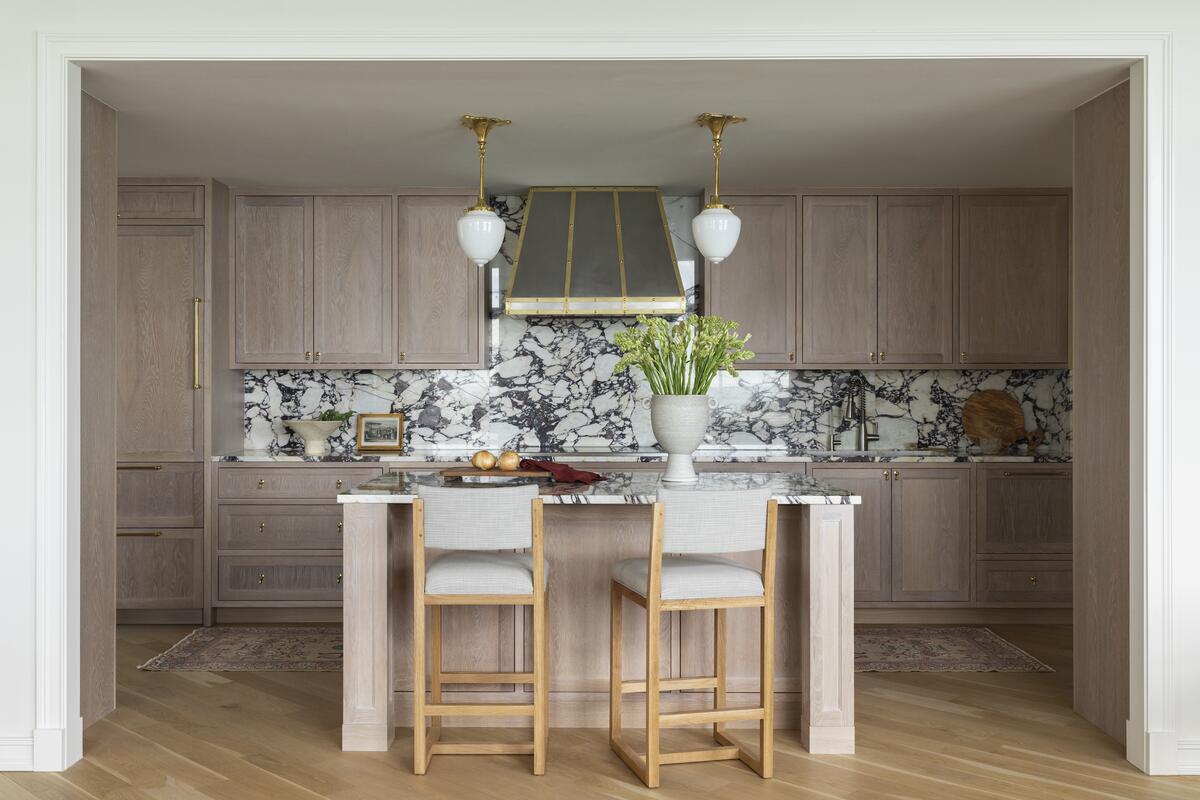
What does your business look like today?
It’s been a really encouraging couple of months, and a year or so of a lot of growth. We’re a full-time team of three, we have an intern every so often, and then there are quite a few part-time people who help me run the business, like an accountant. We’re working mostly on residential projects, as well as a med spa that I’m really excited about.
When and how did you start to build that team?
I had just gotten that big job in Highland Park, and I immediately knew that I was out of my depth. I saw a post in a designer Facebook group about virtual assistants, and someone had shared their information. Something in my gut was like, “Why don’t you just call her?” So I did, and she has been working for me since. She came on as a 10-hours-a-week virtual assistant to help me with ordering and sampling, but now she’s full-time.
Frankly, it turned into a lot more involvement as that project went on, and from a money perspective, it probably was not the right time. I certainly wasn’t making enough to bring someone on. But it felt like if I didn’t, I would lose the momentum I had. And I think that’s such a common thing in business, no matter how big you get—there’s always going to be questions of, “Do I spend the money to keep the momentum? Do I risk it?” Then I brought on another woman who went to my alma mater to work with me two or three days a week, and that was my first experience being a boss with hands-on in-person staff. I actually think that was a really good way to start, because it was not every single day. And I had time to make sure that I was giving her what she needed to do her job. Then my now-junior designer came on in the summer of 2021 and has been with me since.
Did delegating come easy for you?
The internships I did gave me really good experience in watching titans of our industry hold on to the creative side while maximizing their time. I think that’s one of the most key things I learned, especially when I worked for Kelly Wearstler. She was excellent at that. She was the one who held the key to the overall vision, but she didn’t feel the need to design every single little detail for it to still be her vision. I learned how to be generous in the tasks I give, even if [the employee is] potentially not quite ready, because they know where to work toward even if they get it wrong. If you work here, you are being thrown into the fire and doing everything.
I still do the things that set the tone for the project: the initial design, our vibe imagery, our initial materials. I am always the client-facing person, the one who puts out the fires. But generally speaking, I let [junior designer] Gracie Miller and [project manager] Samantha Ionescu help as much as they can because I think that’s what makes them invested. When we install, they design pieces of it, and there’s nothing more exciting than seeing something that came out of your brain [appear] in the world in someone else’s home. I had times in my life when I had bosses and mentors who let me do that, and it taught me more than anything. And I think that even though it causes some potential issues, and I have to eat crow occasionally because the buck stops with me, they’re not going to learn otherwise.
That idea of generosity with the tasks you give is really beautiful.
I certainly have had both experiences. Kelly was an excellent delegator. It was my first internship, I was 20 years old, and the things that she trusted me with made me so invested—that gave me more confidence than anything. And frankly, I don’t know if she could pick me out of a lineup, but that’s not what mattered. It was that she was so generous, even to someone she was probably never going to see after that summer.
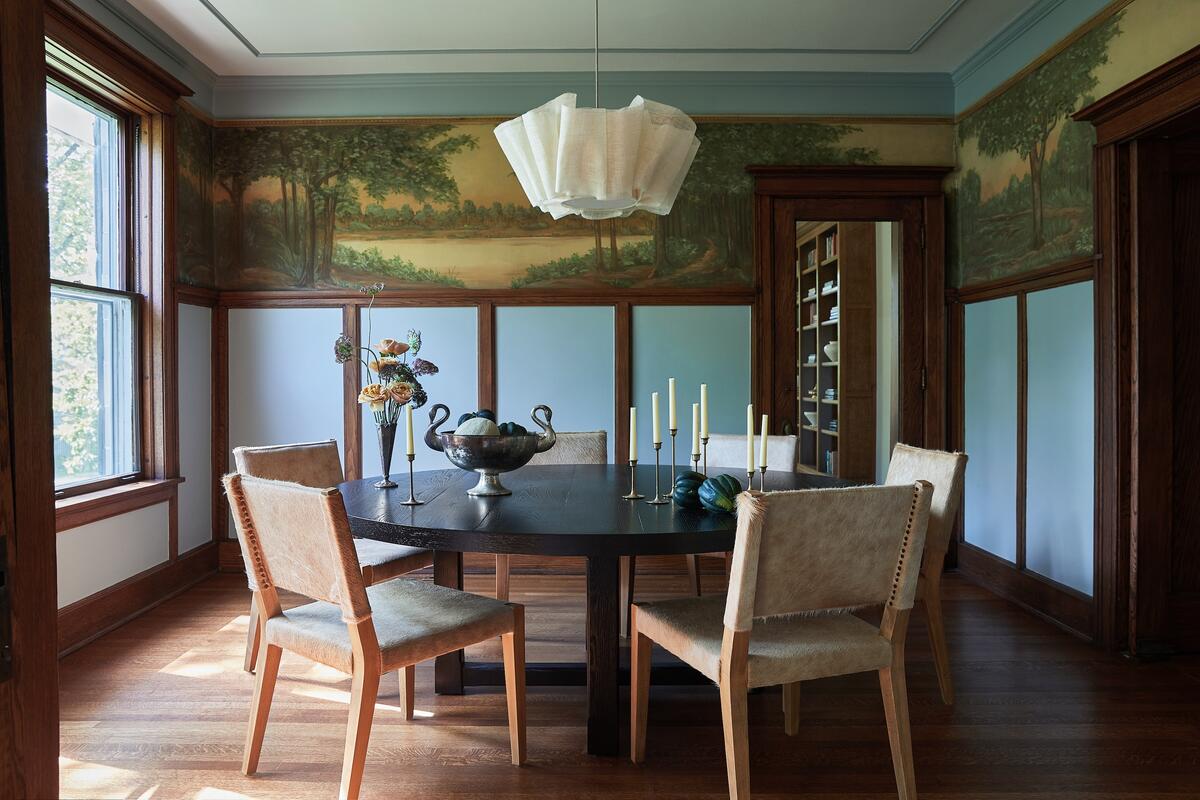
How do you see your role in the firm now and as it evolves?
It’s a question I ask myself all the time—how we scale this and keep it as client-centered as possible while not replicating our work over and over again. I love the initial process of going to the space for the first time, because the rush of ideas that just immediately come to me, I almost feel like sometimes I need to be able to sit down for an hour and sort through it before I have the meeting. That is always the most exciting piece, and then digging into the inspiration, and it’s often just because I’m really excited about it that I almost can’t help it. I go to my inspiration sources, and that typically sets the tone. But I share that inspiration with Gracie, the junior designer, and she’s the one who puts it all into a presentation. So, sometimes I’ll say, “Do you feel like that doesn’t fit right with what I’m doing? Should we cut this?” You know, it’s still a collaborative effort. And then materials are one of my favorite pieces of the puzzle, especially hard materials. I love tile, natural stone. I’m obsessed. That piece also feels like it really sets the tone for the whole home. Then the other pieces tend to sort of fall into place.
The most exciting part for the team is when I’ve had a general idea, and maybe I’ve sketched it, but they get to build the world in 3D. So, when they’re working in 3D or doing the drawing, they’re asking themselves, “How does this function?” And that’s teaching them as they go. And, of course, we have check-ins. So, typically, I’ll say, “Start on this 3D rendering based on this sketch I gave you, and then we’ll have a check-in.” And they’ll have ideas while they’re doing the 3D because that’s just natural—they’re designers. We’ll talk through those ideas and siphon out what works, what doesn’t. There are three rounds of collaboration within that system that homes in more and more on the final design. And then during execution, I’m still heavily involved, but they’re really the owners of the execution. Once we’ve finalized materials and inspiration imagery, I work with them to figure out the timeline, because really, most of our job is logistics and making sure things happen when they’re supposed to happen. And then down toward the end, we’re all working together, but it’s my job to make sure that I give them enough room to do their job. And most of the time, once we’re in the execution phase, I am working on the design phase for another project. I find that the only thing I like to do in private is that initial inspiration pull. That way, there’s nothing from anyone else, but everything else is extremely collaborative.
Does that work as you think about the next phase of growth or evolution for your firm?
Frankly, no. I mean, there’s just no way that I can be involved in all of this for the amount of projects that we would like to be running at any one time. But we’re also not a big enough firm yet. And we’re not there yet, so I don’t have to be involved in the majority of the phases. I’m really not involved in ordering or tracking or scheduling. That’s sort of like the back end of our business, which I luckily do not have to manage. I think I’ll always want to do the floor plans and make sure I understand every nook and cranny. It’s also why I’m always at the first meeting. I’m very client-facing. Our clients are vocal about how they do not want to be handed off to someone else. And as of right now, that is fine for us. Eventually, as our firm matures, there will be designers who manage a lot of that, and I’m the one that manages the high-level fires, the big issues, maybe monthly check-ins and that kind of thing. It’s hard as a creative to sort of pull yourself out of that middle piece.
Kelly is, again, a really good example, because I saw her working just as much as we were. She was there at 8 a.m. She was leaving at 7 p.m. She was always working alongside us. So I felt that even if I was doing something completely different, I had her there and could ask questions and make sure I understood what she was asking me. And I think eventually, that’s where I’d like to get.
That’s a great vision to work toward.
Early in my career, I was always like, “I can’t wait until I get here. I can’t wait until I have this. I can’t wait until we’re in this magazine. I can’t wait until I have five employees.” And I’ve really, really tried to stop doing that. Because otherwise, it’s just passing me by and there’s nothing to grab on to and feel the growth. And so that’s been really key for me, trying not to plan so far in advance—a couple of years, but not 10 years down the line. I can have general thoughts about it, but I can’t get bogged down in the details.
I really prioritize work-life balance for everyone in the company. I want the women who work for me to work for me as long as they want to and not have work-life balance be the thing that runs them out. I’m so grateful that they’re spending their time and energy, especially early in their careers, with me. And I want to make sure that is reciprocated, not just monetarily. I’ve tried to be really cognizant and make sure that they’re able to have real lives outside of work. We all have work phones. They know they can put it in their bag at the end of the workday on Friday. They don’t need to sign on until Monday. There is no expectation of that for me or our clients. And that is not where I started. And it’s made a huge difference, which makes it feel like there’s longevity. I can go for a while because I’m giving myself that break in between.
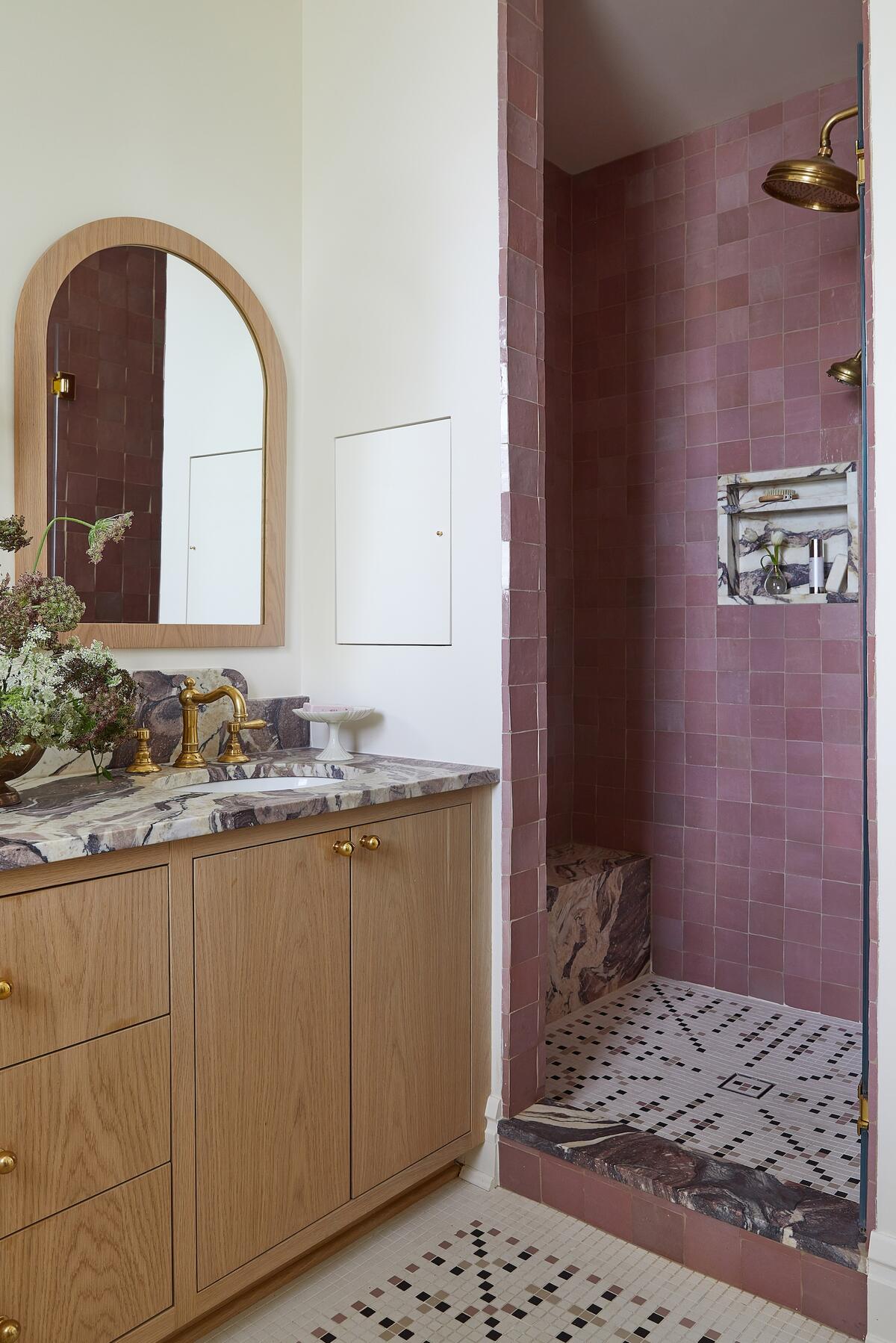
What does it take from you as a principal to have all these deadlines, to have all these pressures, but also to say, “OK, let’s pump the brakes here, because how we feel is more important”?
We all work from home on Mondays as much as possible, which also means the team can do all their [personal] appointments on Monday. I’m in therapy on Mondays, so I guess I’m leading by example, and they’re allowed to do that as well. We also have unlimited vacation days. I’m very relaxed about that kind of thing—I know how dedicated they are, so I don’t need to make those rules. They make them for themselves. I’m usually the one saying, “You should take a vacation. You need to take time off!” which is also what they’re doing for me.
You have worked in the offices of some amazing and well-known designers—Kelly Wearstler, Kara Mann, Nate Berkus. How did that shape your perception of success?
I’ve had three really good examples of how you can take this industry and create your own path, and really, each of their careers has been so different. But I try to avoid comparing myself to any of them—that comparison to something that is so far from where our reality is will only hurt me. It’s not productive. I think it encourages some people to have that kind of career as a goal to work toward. And if you had asked me even two years ago, I would have told you that all I wanted was to be a famous designer like the people I’ve worked for. Now I just don’t know that that’s at the top of my list. At the end of the day, I’m thinking, “How did I treat all the people I worked with today? How is everyone else feeling as they leave the office? How are our clients?”
I was really inspired by Kelly. She was the first person I ever worked for, and she set the bar so incredibly high, it’s not even funny. But the decisions she’s made, how she has rolled out her career, the line she’s created, the people she’s partnered with—that is my dream career. But more than that, she was working in an extremely high-stress environment, she was managing so many people, and I can’t think of a bad experience with her. I was a lowly intern, but the way she treated me felt very indicative of how she treats everyone around her. If anything, that is the real bar for me.
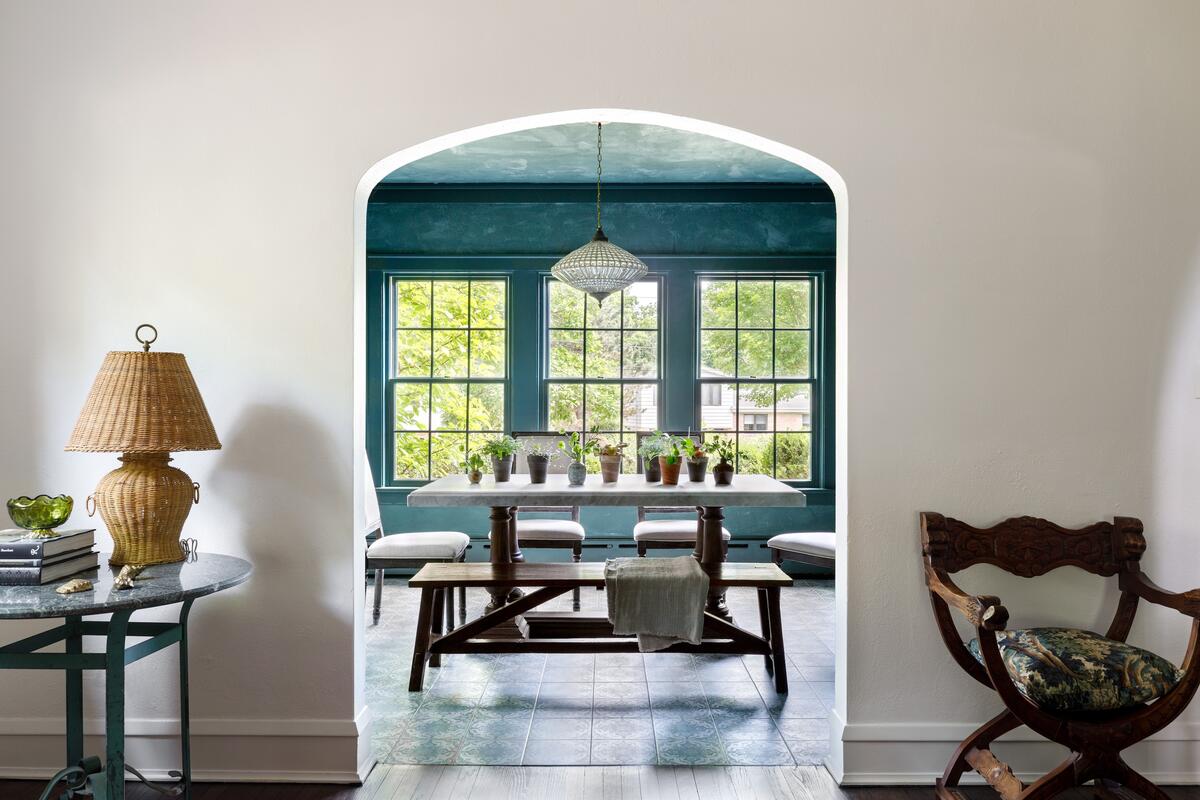
When you started your business, what processes did you want to take with you from the firms you had worked at?
When I launched my firm, I couldn’t have worked for someone else—I just needed to do my own thing. But in hindsight, I probably should have worked for a person who had, like, two employees, because I know that my team gets a much more inside look at the business side of the firm. I was so shielded from things like billing challenges. I was never really involved in the discussions like, “How do we manage a client not wanting to pay their bill?” or “How do we manage a client not liking the sofa?” There were other people who did that job.
What I really took away from the people I worked for was the client experience—the service piece of it, and knowing that even if you can’t make everyone happy, you’ve exhausted all options to get them what you said you would.
Where did you land when you needed to start figuring out how to charge for your work?
I started with a flat fee because I needed people to hire me. That is God’s honest truth! I just don’t think I would have gotten the jobs I did without the flat fee, which felt more accessible for the clients I was trying to attract. I also didn’t feel like I had the experience to reasonably estimate hours and not go over them, or the bandwidth to mark my hours, because I was flying by the seat of my pants process-wise. After two and a half years, we moved to hourly because it was too difficult to make money with a flat fee—especially during Covid, when projects were going way longer because of all the supply chain issues.
Do you feel the difference after switching to hourly?
It took a while, but yes, I find that it gives us a lot more control. We certainly have a lot more hard conversations about bills, which is one of the main things I didn’t want to have to deal with when I was starting out, but I’ve just had to get used to it. I make sure I’m giving them as thorough an answer as possible but not bending to requests.

You’ve rebranded recently. Can you tell me a little bit about that process and why you wanted to invest there?
I built my own website when I first launched, and it was very scrappy because there was no money to invest in anything. It worked, but it wasn’t anything to write home about. So, when we decided to launch an e-commerce shop last year, I felt like it was the perfect opportunity to create more of a holistic brand.
I also wanted something different from my brand. In my original branding, I was trying to be mature because I was 24 and needed people to take me seriously. So many times early in my career, I would walk into a room and they’d be like, “Sorry, you’re the designer?” They were not expecting someone that young. [Projecting maturity] certainly opened a lot of doors that I probably would not have gotten in otherwise, and then I was able to prove myself or not. I may never know how much it truly helped, but I would be willing to bet that it did.
When we rebranded, I was 28 and people were not talking to me like I was a little girl anymore. I felt like I had more of an opportunity to show our whimsical side because I didn’t need people to think I was 50 years old anymore.
What does success look like for you today?
Success looks like a solid, happy team, and the company being a self-sufficient, fully functioning business where it’s not taking, it’s giving. I think we’re on the precipice of it—I can feel it coming and am very grateful that we’re almost there. But people are not joking when they say you really don’t make money for five years; it’s true, or it has been for me.
Success to me is also an ethical business, one that people are willing to recommend to their friends, and where people walk away from working with us with a beautiful taste in their mouth that makes them want to work with us again and again.
To learn more about Caroline Turner, visit her website or find her on Instagram.




























